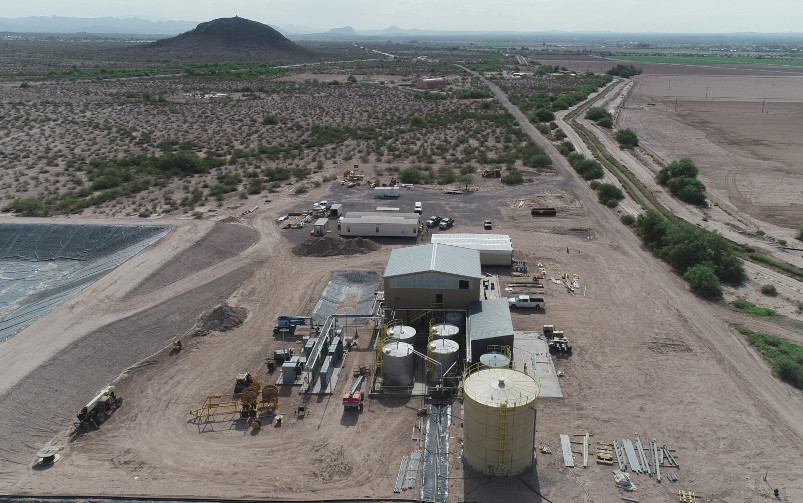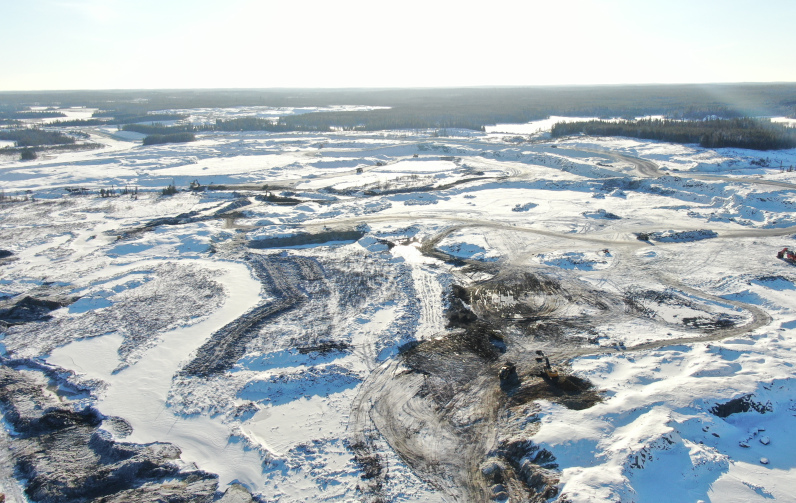TRX Gold is working to expand capacity at its Buckreef mine oxide plant in Tanzania from 15 tonnes per hour to 45 tonnes per hour. Courtesy of TRX Gold.
Welcome back to your weekly mining news recap, where we catch you up on some of the news you may have missed. This week’s headlines include Canada’s new critical minerals supply deals with Volkswagen and Mercedes, a new critical minerals discovery facilitation project in British Columbia and ABB partnering with Hydrogen Optimized to bet on green hydrogen production.
Trevali halted the trading of its common shares on the Toronto Stock Exchange, with trading also expected to stop at other exchanges as well, after filing for creditor protection, as reported by the Financial Post. Additionally, two Trevali employees, a manager and the company’s mining contractor, were detained by authorities in Burkina Faso four months after flash floods left eight miners dead at its Perkoa mine. The two are detained pending a trial on charges related to the flooding, though Trevali said it is working on securing their release.
Thanks to its Buckreef gold project in Tanzania, TRX Gold went from a cash-burning junior explorer to a cash-flow-positive producer in just about a year. While at the moment the project consists of an oxide plant and an open-pit mine, the company is working on expanding the plant’s capacity from 15 tonnes per hour (TPH) to 45 TPH. With a mine team composed 100 per cent of Tanzanian nationals, Buckreef’s success story is one anchored in local relationships, which is exemplified by a local ship-building foundry having provided the steel for the CIL tanks of the plant.
Tailings management is a big responsibility for the industry, representing real physical and chemical risks to the environment and the health of local populations. According to Charles Dumaresq, sound engineering practices and good governance are essential when it comes to preventing failures in tailings facilities. Towards Sustainable Mining (TSM), a globally recognized sustainability program, provides a standard for responsible tailings management and comprehensive guidance as to how to measure and achieve those standards.
Following last week’s refusal, Rio Tinto added US$400 million to its takeover proposal for Turquoise Hill, bringing the total offer to US$3.1 billion for the 49 per cent of the company it does not already own, as reported by Reuters. In Rio Tinto’s new bid for direct ownership of the Oyu Tolgoi copper-gold mega mining complex in Mongolia, shareholders of Turquoise Hill would receive US$40 per share, compared to the previous offer’s US$34. Turquoise Hill’s share price rose by 24 per cent after the new offer.
Canada signed memoranda of understanding with Volkswagen’s battery company PowerCo and also with Mercedes, giving the companies priority access to Canadian critical battery minerals, as reported by Electric Autonomy. The agreements also feature the potential for future factories to turn the minerals into batteries for electric vehicles, albeit with no location specified. The deals marked the first agreements in Canada to be made between foreign-owned companies and the government for preferable access to raw materials.
The 61st annual Conference of Metallurgists, held this week in Montreal and hosted by the Metallurgy and Materials Society of CIM, focused on the theme “Pathway to Net Zero.” Government representatives, industry professionals and academics came together to discuss the pulse of the sector on the issue. Key talking points involved the government’s role in strengthening the critical minerals supply chains, how metallurgists can rise to the challenges of emissions elimination and the technologies being developed to address them.
A new project from the University of British Columbia Mineral Deposit Research Unit (MDRU) will make use of Geoscience BC’s existing geophysical data to identify new critical minerals exploration opportunities in British Columbia’s north central region. Thanks to electromagnetic and gravity data, the MDRU will “see through” the thick glacial sediments covering the Quesnel terrane deposit belt in the area to analyze the bedrock. The terrane is best known for its porphyry copper-gold with silver and/or molybdenum deposits.
ABB and Hydrogen Optimized (HO) have expanded their relationship, with ABB now set to invest in HO’s parent company Key DH Technologies as both companies seek to accelerate large-scale green hydrogen production. The financial terms of the agreement have not been disclosed. HO’s RuggedCell water electrolysis technology converts hydro, solar and wind power to produce hydrogen at scale, something that addresses the needs of a number of industries, including metals, energy, fertilizers and more.
In 2020, Alberta scrapped a policy that limited coal development, leading to a burst of exploration and development in the province, which was curtailed by the policy being put back into place after protests. The abrupt stop on development left a significant impact on the land it disrupted, where up to 80 kilometres of new roads were built and exploration and drilling took place, as reported by CBC News. The sudden withdrawal of the coal green light has left many companies on life support, with no revenues to fund land reclamation on landscapes where human activity would not have otherwise occurred.
The province of Saskatchewan is expecting a $1.04 billion surplus for 2022-23, which can be in large part attributed to potash and oil revenues, as reported by CTV News. A deficit of $463 million was initially anticipated for the year, the new figure representing a $1.51 billion improvement from the budget forecast. High resource prices and higher revenues from non-renewable resources led to the province’s windfall.
That’s all for this week. If you’ve got feedback, you can always reach us at editor@cim.org. If you’ve got something to add, why not join the conversation on our Facebook, Twitter, LinkedIn or Instagram pages?




